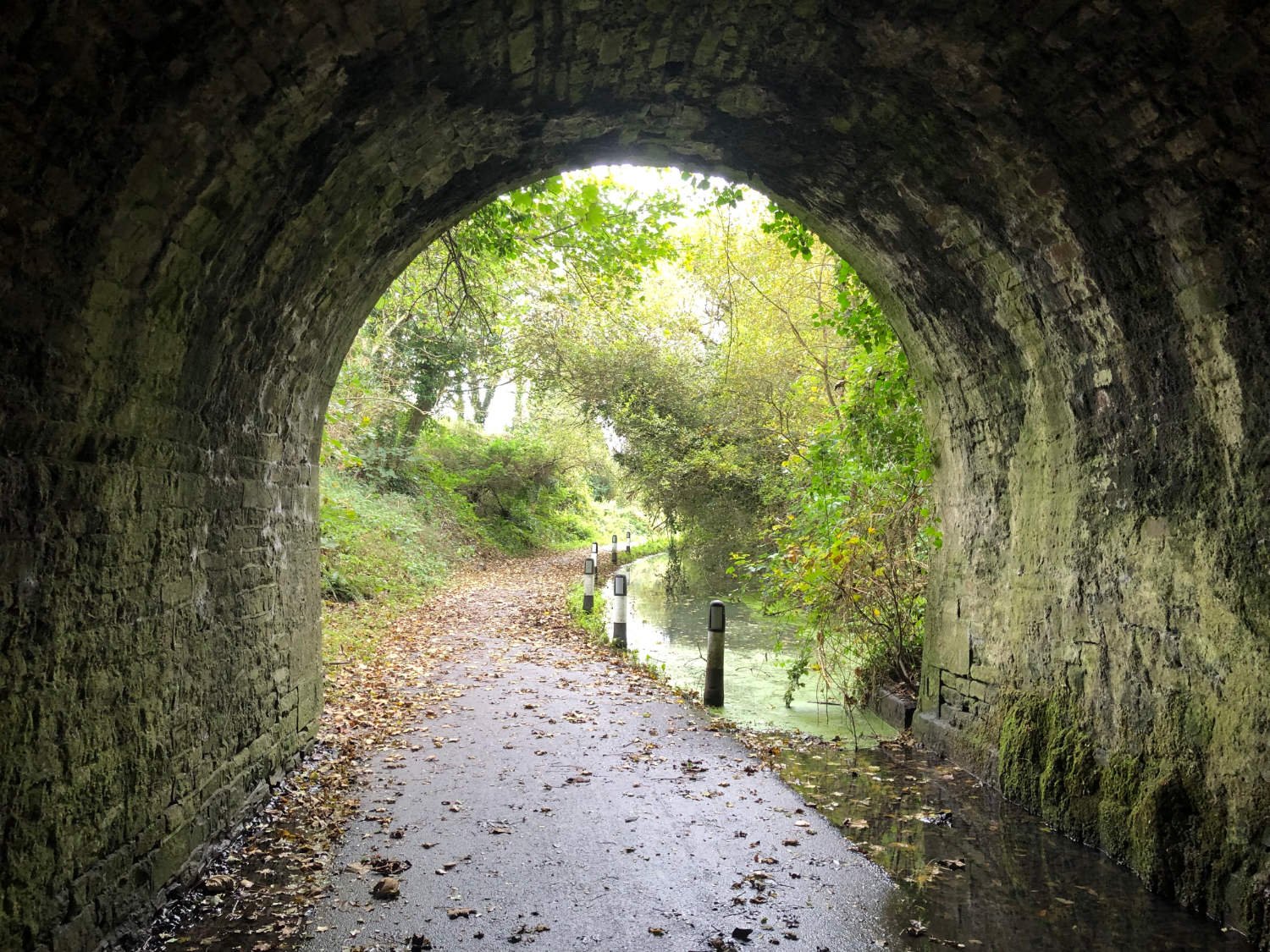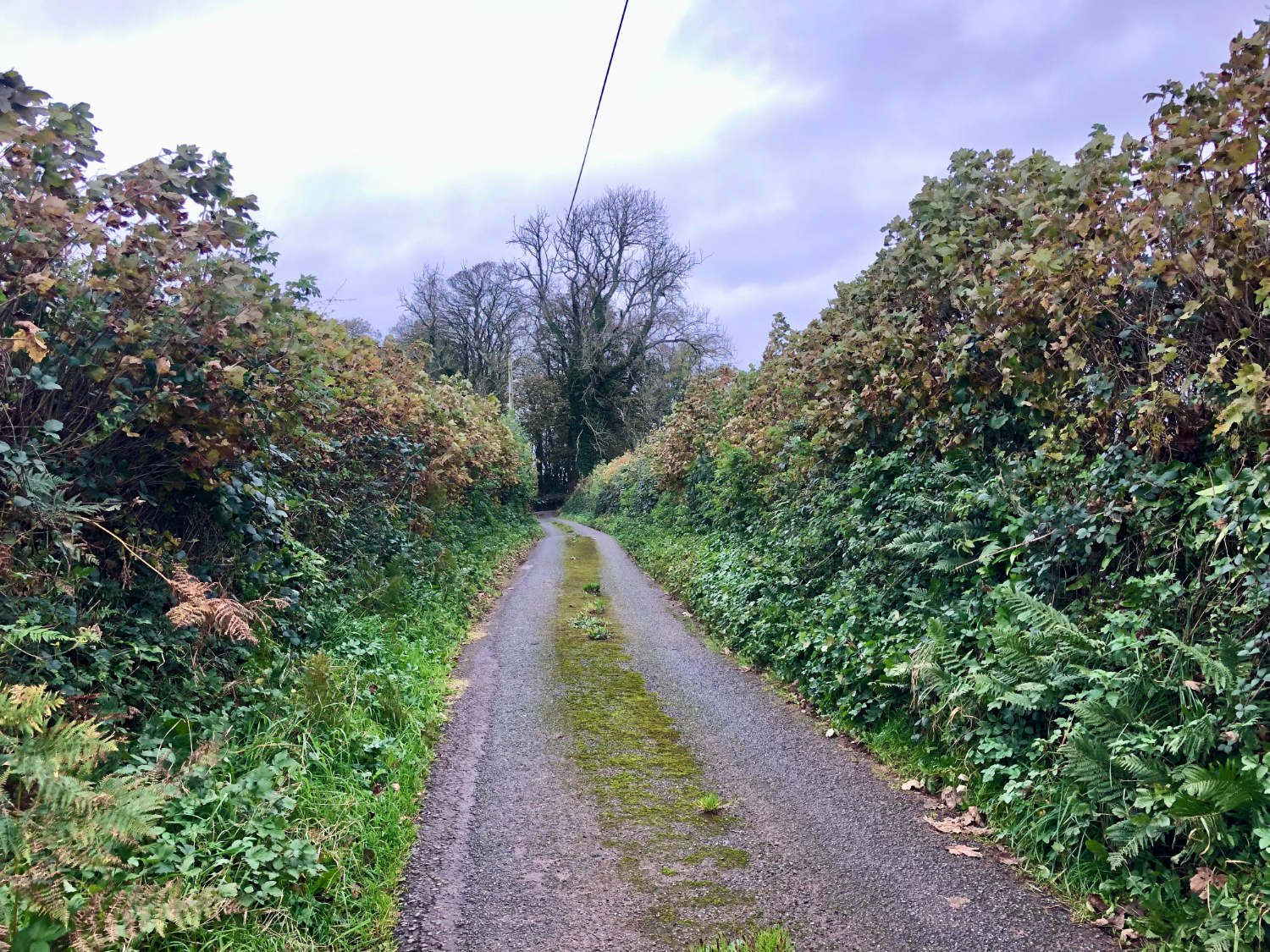NCN 4 Llanelli to Pembroke
Saundersfoot beach
Ride Overview
104km Llanelli to Pembroke
A mid-autumn bike tour in the UK can expect glorious colours as the season turns the country into a muted colour wheel. There is too, a sense of repleteness to the countryside, as we might expect when we are full and satisfied after a particularly good meal. Accommodation is still easy to find and the pubs and restaurants are no longer fully booked. And although there might be the odd shower, the temperatures of autumn are usually ideal for cycling. It is in short, the perfect time for a week-long tour. But occasionally the gods have other ideas and they can throw a whole new set of challenges into the mix; high winds, driving rain, sodden lanes.. This stage of the NCN 4 rides beside an Atlantic coastline so expect ‘weather’ as well as spectacular cliffs, wide sandy beaches, narrow lanes and rolling green countryside - very rolling in fact. Add an Atlantic storm to the mix and you have a rawer and wilder seaside experience; waves crash against the shore, leaves fly and above you the gull glides across the grey sky, quite unperturbed by it all. Either way, in both sunshine and rain, it’s a marvellous and memorable ride.



















Ride Practicalities
START/FINISH: Llanelli/Pembroke DISTANCE: 107km TOTAL ASCENT: 1338m TERRAIN AND SURFACES: Narrow, high-hedged lanes with little or no traffic, mixed with some well paved cycle lanes. The route is best suited to 28mm tyres RECOMMENDED CAFÈS/PUBS; There are no recommended cafes along this section. For a cafe/pub to be recommended it has to reach certain ‘Wheels’ criteria including, the hospitality, cycle provision, good food and drink CAMPING/ACCOMMODATION; Thorning Farm camping MAINLINE RAILS; Carmathen, Pembroke LINKS TO OTHER RIDES:
Ride Notes
The cycle paths in Wales are a joy to ride on. Leaving Llanelli on a wide and very smooth bike lane alongside the enormous beach, is a very satisfying way to begin a day. A sea breeze blowing through the marram grass, waves chatting on the short. Before turning north to follow the Towy, you pass near to the spot where Ameila Earhart landed her plane in the estuary, having been the first woman to cross the Atlantic in a plane. Not only was Earheart a pilot flying the most flimsy and open-aired planes, but she was an outspoken campaigner for women’s rights, as well as a fashion designer and professor. She died whilst attempting to fly around the world.
The route, with fine river views all along the way, follows the river Towy to Carmarthen. The town claims to be Wales’ oldest continuously inhabited town, recorded no less by the great Roman geographer, Ptolemy. This being Wales, where English king’s colonising instincts remained strong throughout the Middle Ages, there’s a castle albeit not as imposing as what we will see at the end of the day.
Once across the Towy, the route heads over deliciously green, rolling countryside. It is real Celtic-Altantic scenery, the sort that you commonly find in Brittany, Cornwall and of course here in Wales. Oak woods, high hedges, pasture and isolated farms whose buildings are thick-walled, accompany you along the way.
At Amrot you regain the coast, and what a coast! Wide beaches, cliffs and the Atlantic in full swell. After some rolling kilometres, you arrive in one Britain’s most attractive towns, Tenby. As with so many British seaside resorts, the town’s fortunes were indebted to one man, Sir William Paxton, who was keen to capitalise on the 18th centre fashion for sea-bathing. He created ‘a fashionable bathing establishment suitable for the highest society’, which included building a railway and several hotels. it was developed by one developer, keen to capitalise on the late 18th century fashion for sea-bathing.The town’s wide promenades and walkways were built to accommodate the wide prams pushed by nannies. The draw of the town is not only its harbour, its town walls and castle, but also its brightly coloured Victorian buildings and independent shops and cafes.
The way continues over hills and dales, with views and smells of the sea. The day ends in Pembroke, another Welsh town dominated by an impressive ruin of an English castle. Its walls and towers, its threatening domination of the town are as chilling a piece of military supressive architecture as anywhere. In many ways, it mirrors Windsor with its round curtain walls, and its great central tower. Even its first constable was a Windsor - Gerard of Windsor. Within the walls was born the future Henry VII. Until the early 1900s, over 260 ships were built in the docks, most of them for the Royal Navy.
To go straight to stage 7, click here
To return to stage 5, click here
All the details given on this route are given in good faith. However, situations on the ground can change, so if you know of any access issues, closures, or have any thoughts and feedback on the route, please include them in the comments section below.
